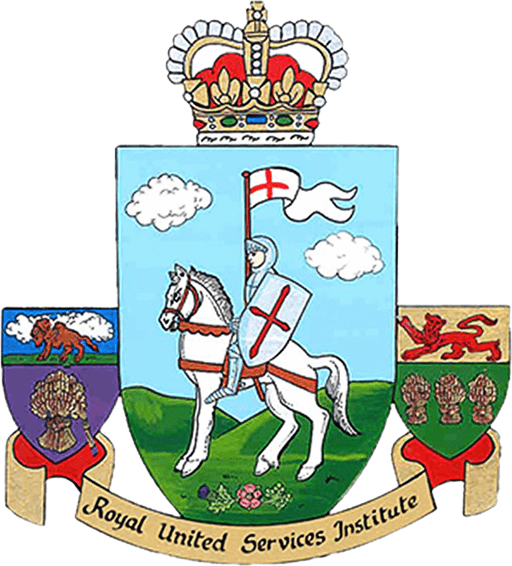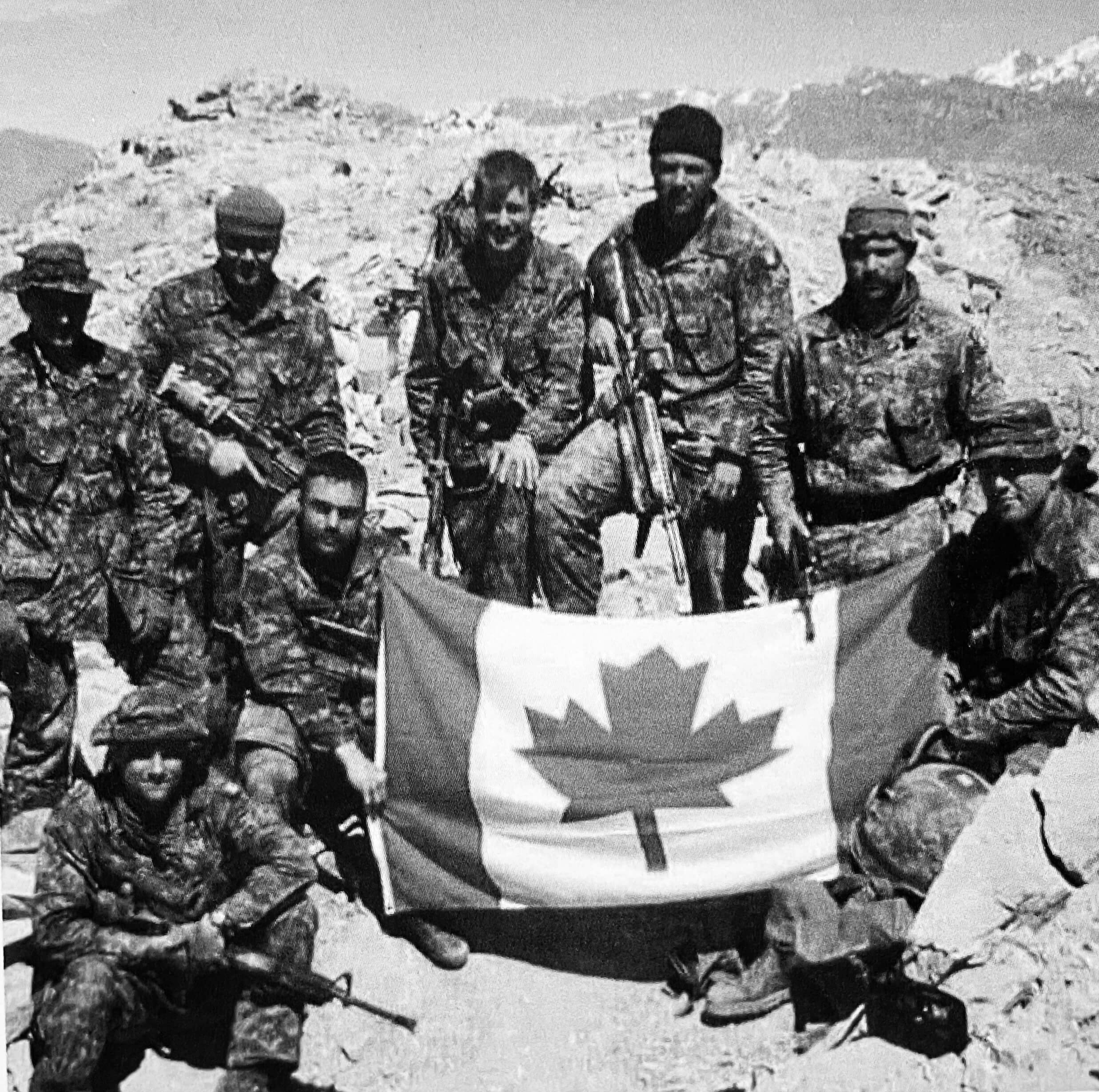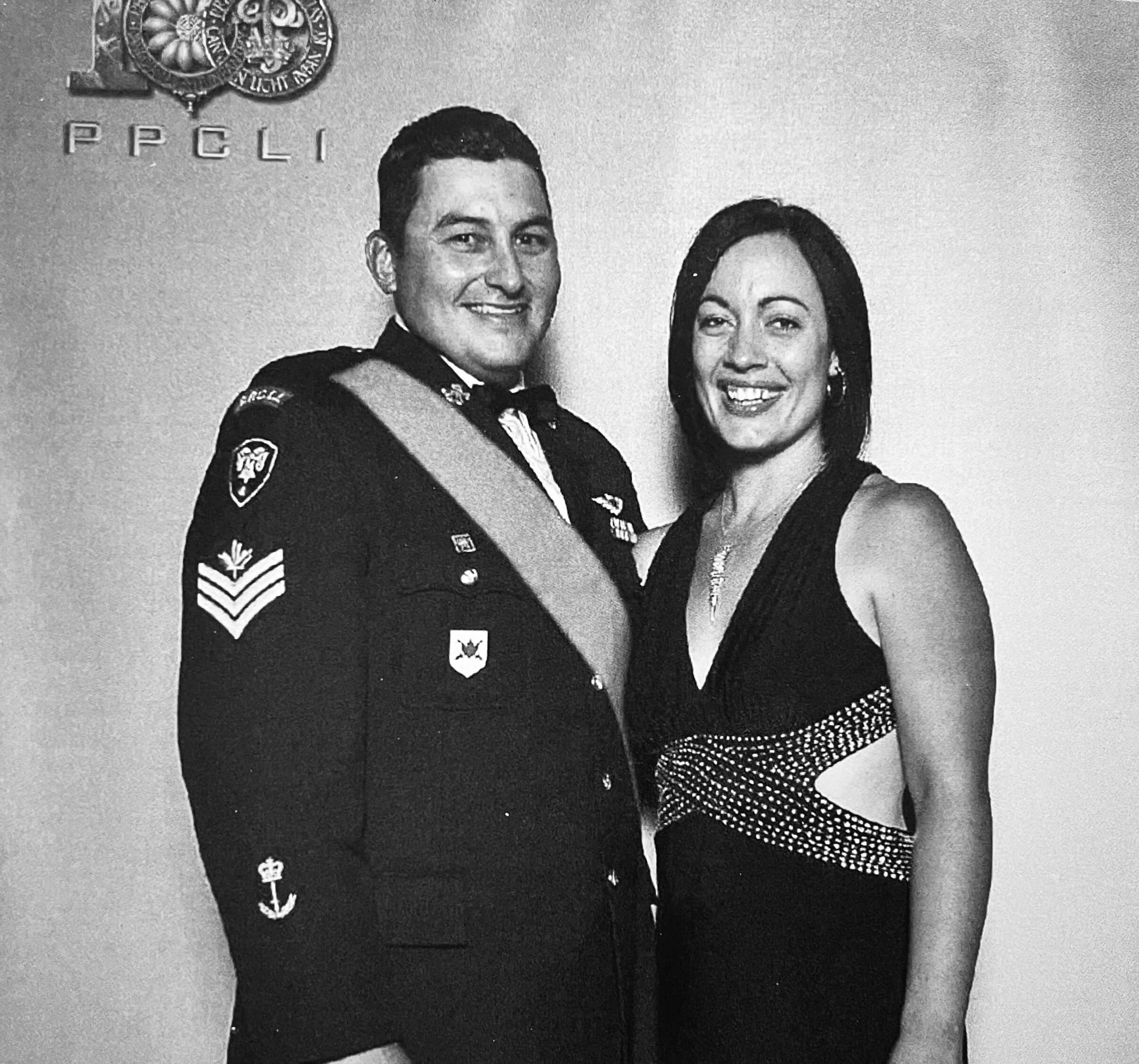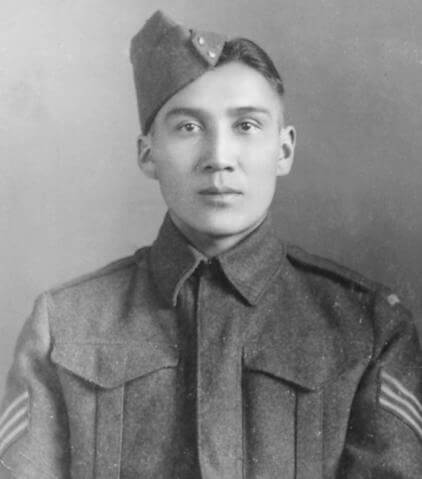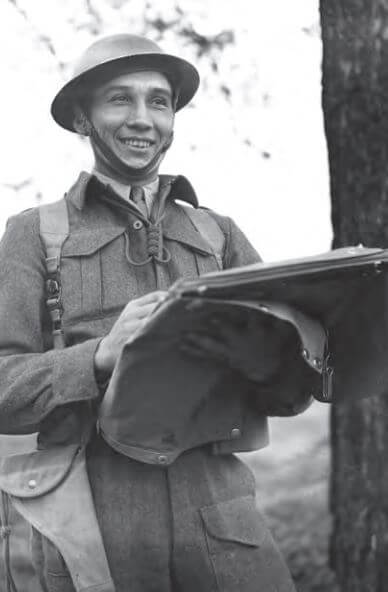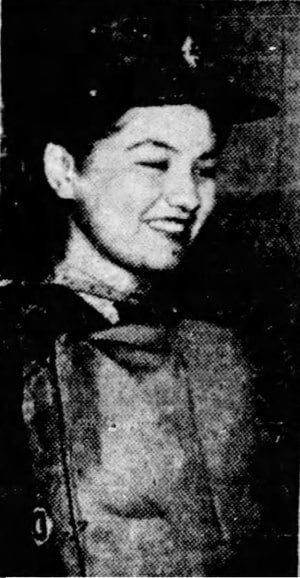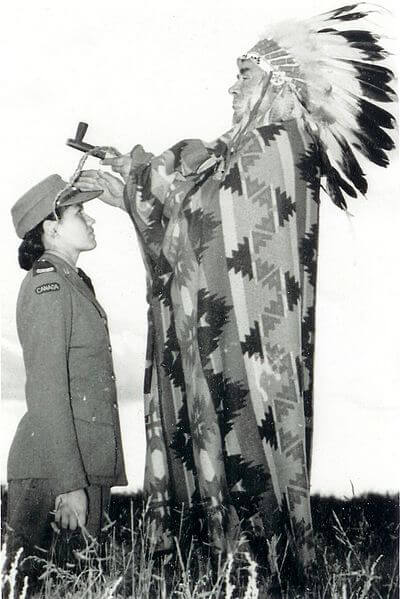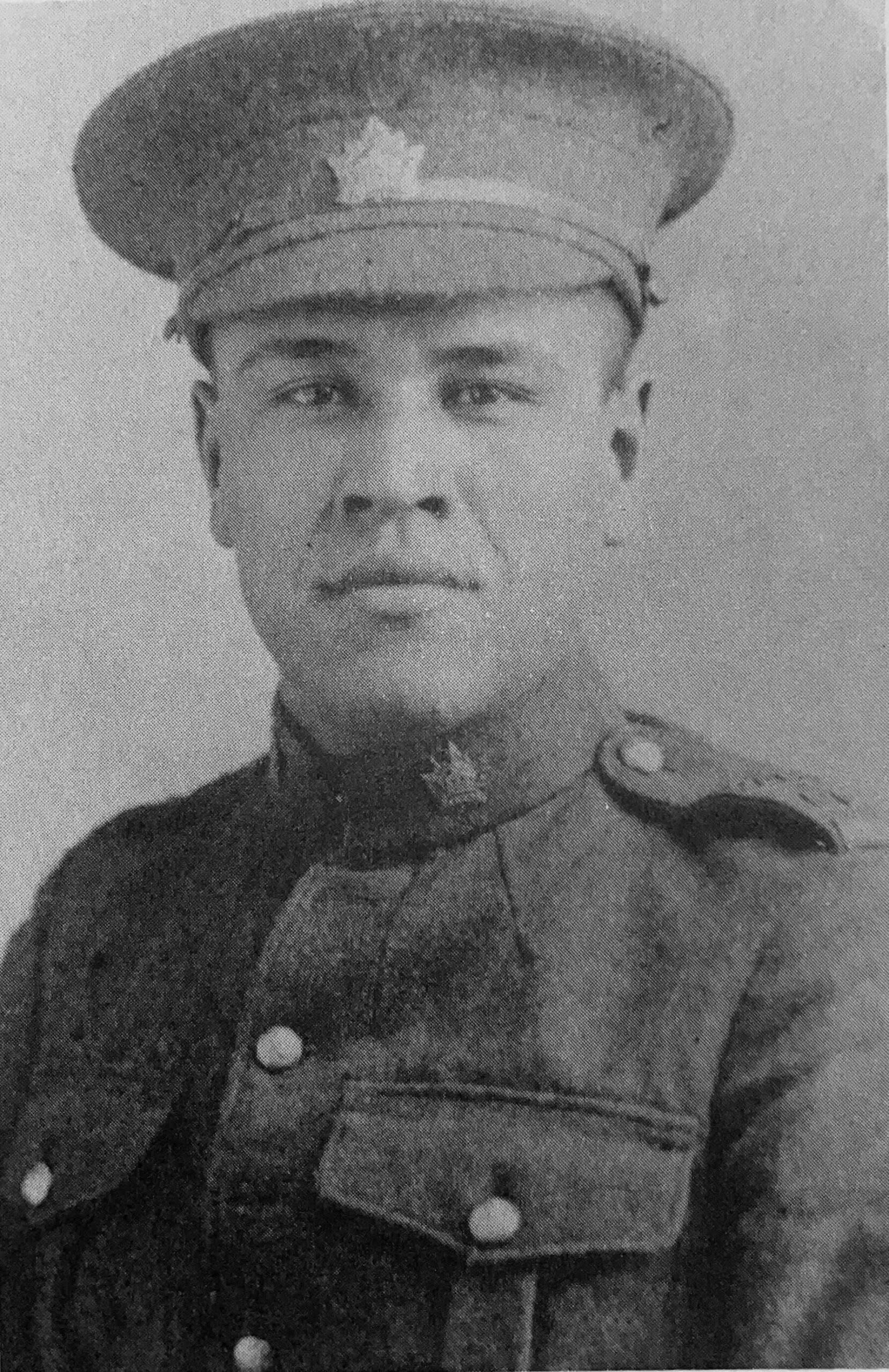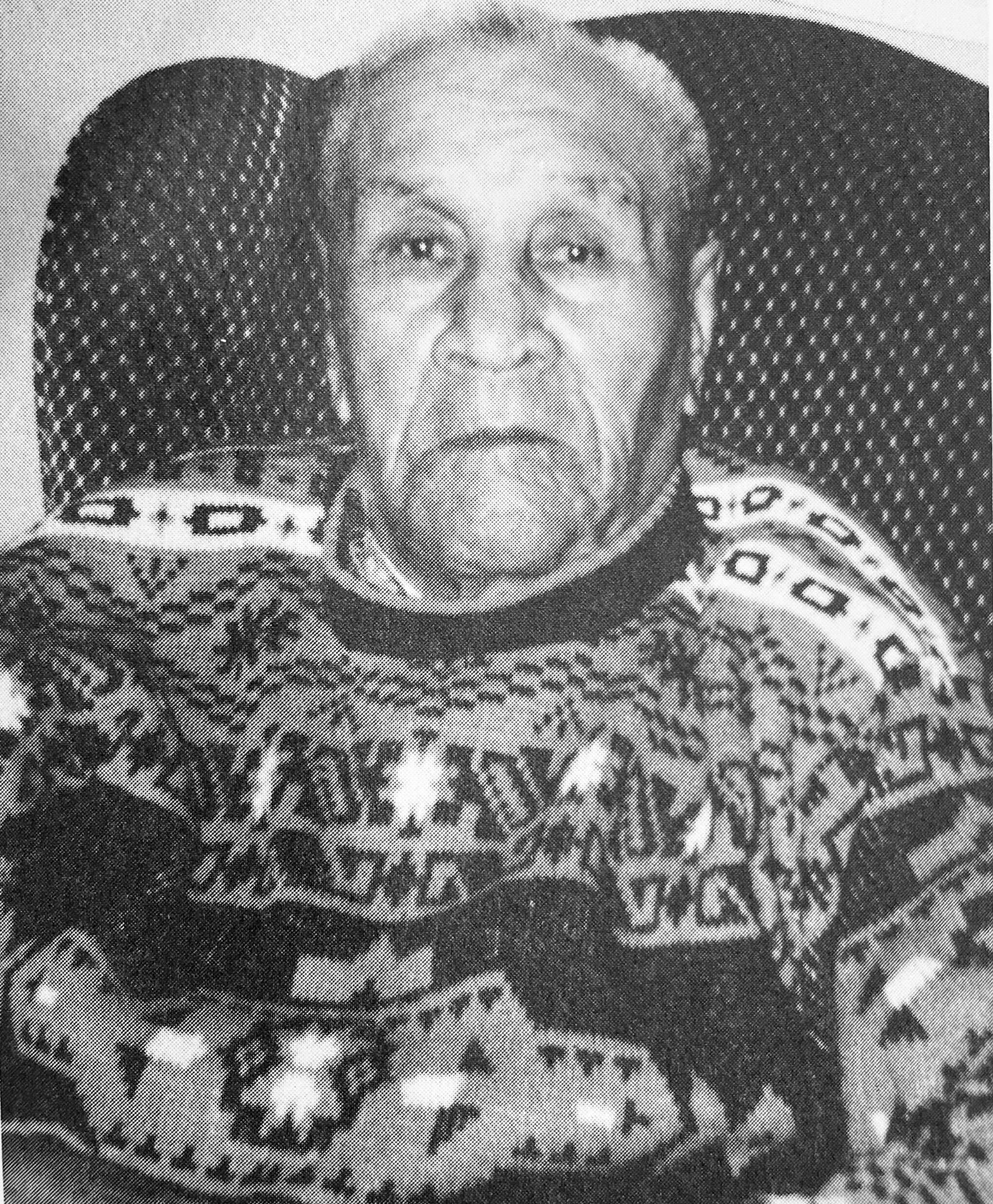First Nations, Métis and Inuit peoples of Canada have served in every major war and military operation in Canadian history. These brave men and women used exceptional skills such as hunting stealth, marksmanship, and ingenuity to secure victory on the battlefield. Here are some of these brave individuals.
Photo: First World War Indigenous Veterans from the Cote, Key, and Keeseekoose Reserves, Saskatchewan.
Sgt. Shaun Wendell Cameron was born on the Beardy’s and Okemasis First Nation. After serving as an officer in the RCMP, he trained in the BOLD EAGLE program and later joined the Princess Patricia Canadian Light Infantry, 3rd Battalion. Serving in Bosnia in June of 2000, he was eventually stationed in Kandahar, Afghanistan in 2002. He completed a second tour in Afghanistan in 2010. Due to injuries he sustained in his time of service, Cameron retired from the military in 2016.
Virginia Pechawis (Bird) was born on the Mistawasis First Nation on February 5, 1926. She enlisted in the Canadian army in 1944 and went to basic training in Kitchener, Ontario. While there, Pechawis was posted at the Valcartier Military base. After 18 months in the Army she returned home. In 2014, she received the Lieutenant Governor’s Military Service Pin. Pechawis was Saskatchewan’s oldest female Indigenous veteran when she passed on February 2nd 2023.
David Greyeyes-Steele was born on the 31st of December, 1914 in Muskeg Lake Reserve, Saskatchewan. He studied agriculture at the Lebret Industrial Residential School for 11 years before he was selected to play internationally for the Saskatchewan all-star soccer team. David Greyeyes enlisted in the Canadian military in 1940. Early in his career, he was put in charge of training a British reinforcement unit. Eventually being promoted to lieutenant, Greyeyes would go on to command platoons in the Italian Campaign.
In 1970, David Greyeyes was promoted to Regional Director of Indian and Northern Affairs Canada, becoming the first Indigenous person to hold this title. One year after his retirement in 1975, David Greyeyes was inducted into the Saskatchewan Sports Hall of Fame as well as awarded the Member of the Order of Canada. Other accolades include the Saskatchewan Order of Merit in 1993 and the Saskatchewan First Nations Sports Hall of Fame in 1994. David Greyeyes-Steele passed away on the 22nd of July, 1996.
Mary Greyeyes, was born on the 16th of November, 1920, on Muskeg Lake Reserve, Saskatchewan. She travelled to Regina in order to join the Canadian Women’s Army Corps in 1942 after hearing about her brother, David Greyeyes’, experiences. Though she was initially unsure of her eligibility, her acceptance into the military made her the first Indigenous woman to join the ranks of the Canadian military.
Daniel Pelletier was born in 1892 at Waywayseecappo, Manitoba. In 1916, he enlisted to fight in the First World War after he was inspired by his twin brother, Alexander, who had joined the military two years prior. He joined 217th Infantry Battalion in Melville and was sent to France and fought in Vimy Ridge. Here, Daniel Pelletier experienced the horrors of war in bombings and gas attacks.
During the Second World War, Pelletier stayed in Canada, but served with the 16th/22nd Saskatchewan Horse. He was promoted to sergeant and worked as a basic training and language instructor. After the war came to an end, Pelletier was discharged and given a disability pension. Daniel Pelletier was awarded various accolades for his service including the British War Medal, the Victory Medal, the Canadian Volunteer Service Medal and the War Medal.
Over the years, more than 12,000 First Nations, Métis and Inuit people have served In Canada’s wars. More than 500 lost their lives and many suffered physical and psychological injuries. The glass teepee at the First Nations University in Regina was built to honour Indigenous veterans who served in both the Canadian and United States military since the First World War.
(Quote by Charles “Checker” Tomkins, World War II Veteran)
Sources
Miso, Jean. Warriors & Nations: voices from the original people. Toronto, Ontario: Jean Miso, 2023.
Various Contributors. Onâpêhkâsowiyiniwak Kisiskâciwan ohci: Courageous warriors of Saskatchewan. Saskatoon, Saskatchewan: Sweet Grass Records Inc., 2021.
Hutchinson, Dave, Anne Dorion, and Rick Desjarlais. Remembrances: Métis Veterans. Regina: Gabriel Dumont Institute, 1997. Print.
Bellegarde, Brad. “Memorial Teepee Honours Indigenous Veterans Across Turtle Island.” CBC News. CBC, 8 Nov. 2017.
Media
David Greyeyes: Muskeg Lake Cree Nation Archives, Flora Greyeyes-Steele fonds, MLCN-214-0004
The Leader-Post (August 19, 1943)
Department of National Defence
Library and Archives Canada (PA-129070)
Government of Canada
Written by: Mason Hausermann & Eric Salminen Villarmin, of the University of Regina.
